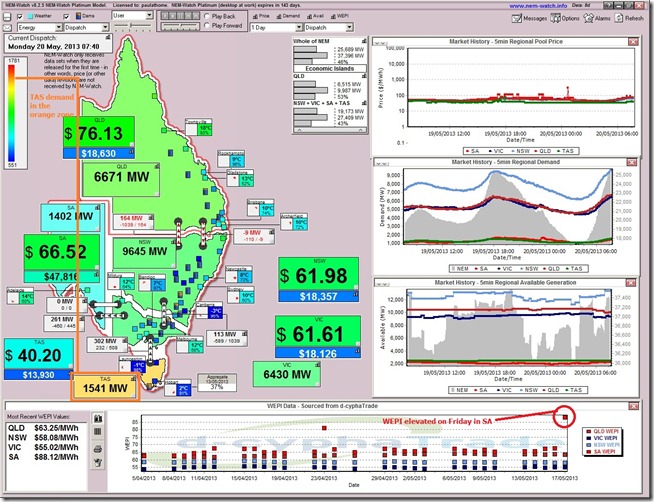As morning temperatures dropped to the bottom of the range you’d expect for May around much of the market, we saw that the demand in Tasmania had kicked particularly high (into the orange zone) on the back of some chilly temperatures there.
As shown in the following snapshot from NEM-Watch, the demand in the mainland regions is shown in the mid-range (green zones), and even a bit lower in South Australia, where the state capital is seen to have the highest temperature of all. In Tasmania, however, the demand is about 200MW below its all-time peak.
Also shown (in the WEPI for last Friday) was the effects of the price spikes that occurred in South Australia last Friday (reported here that morning).



Paul, what do you attribute the price spikes in SA to?
Thanks for the question, Peter
That’s something I might answer, in person, on Thursday when we meet at the EUAA conference.
Cheers
Paul